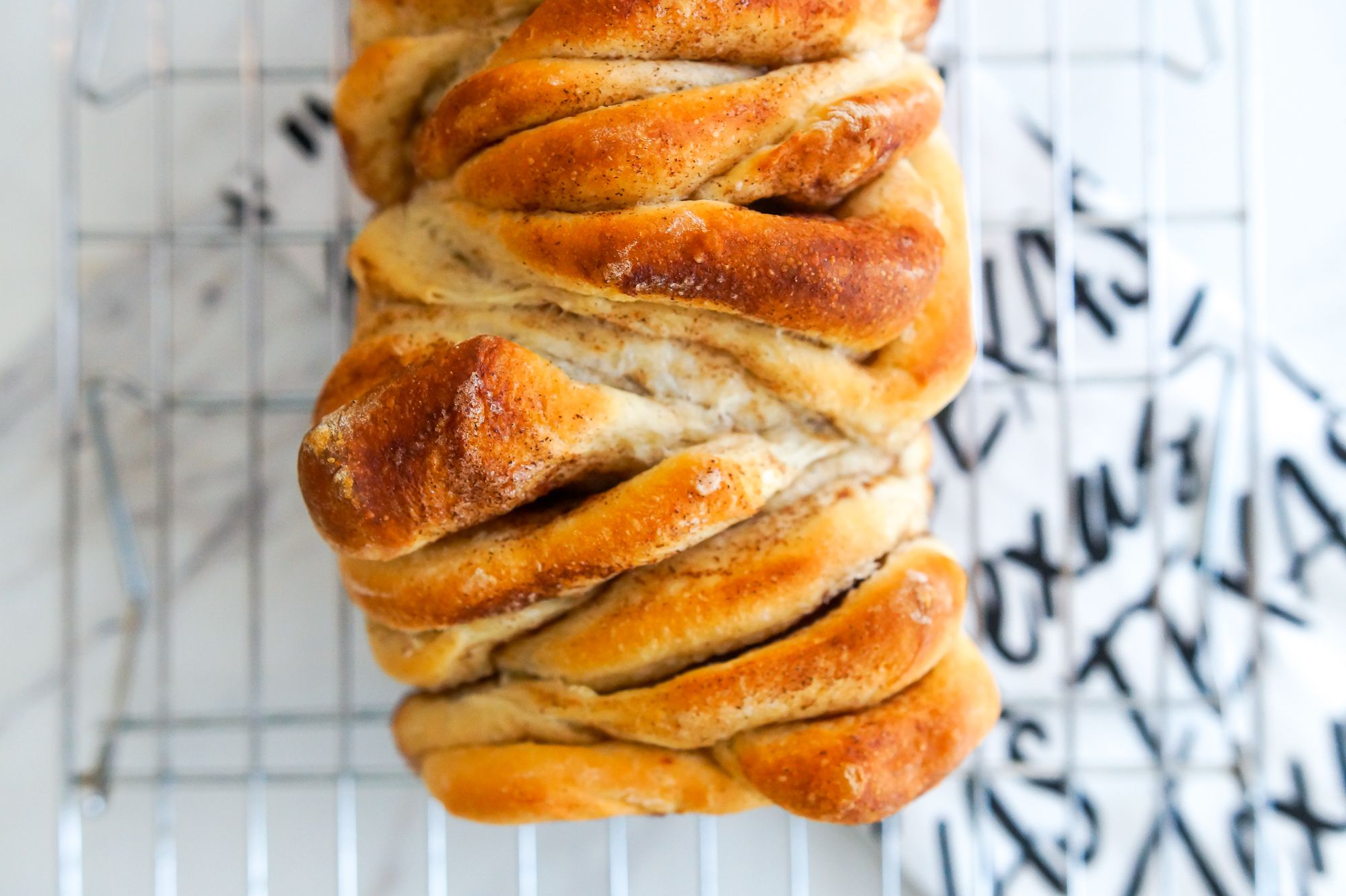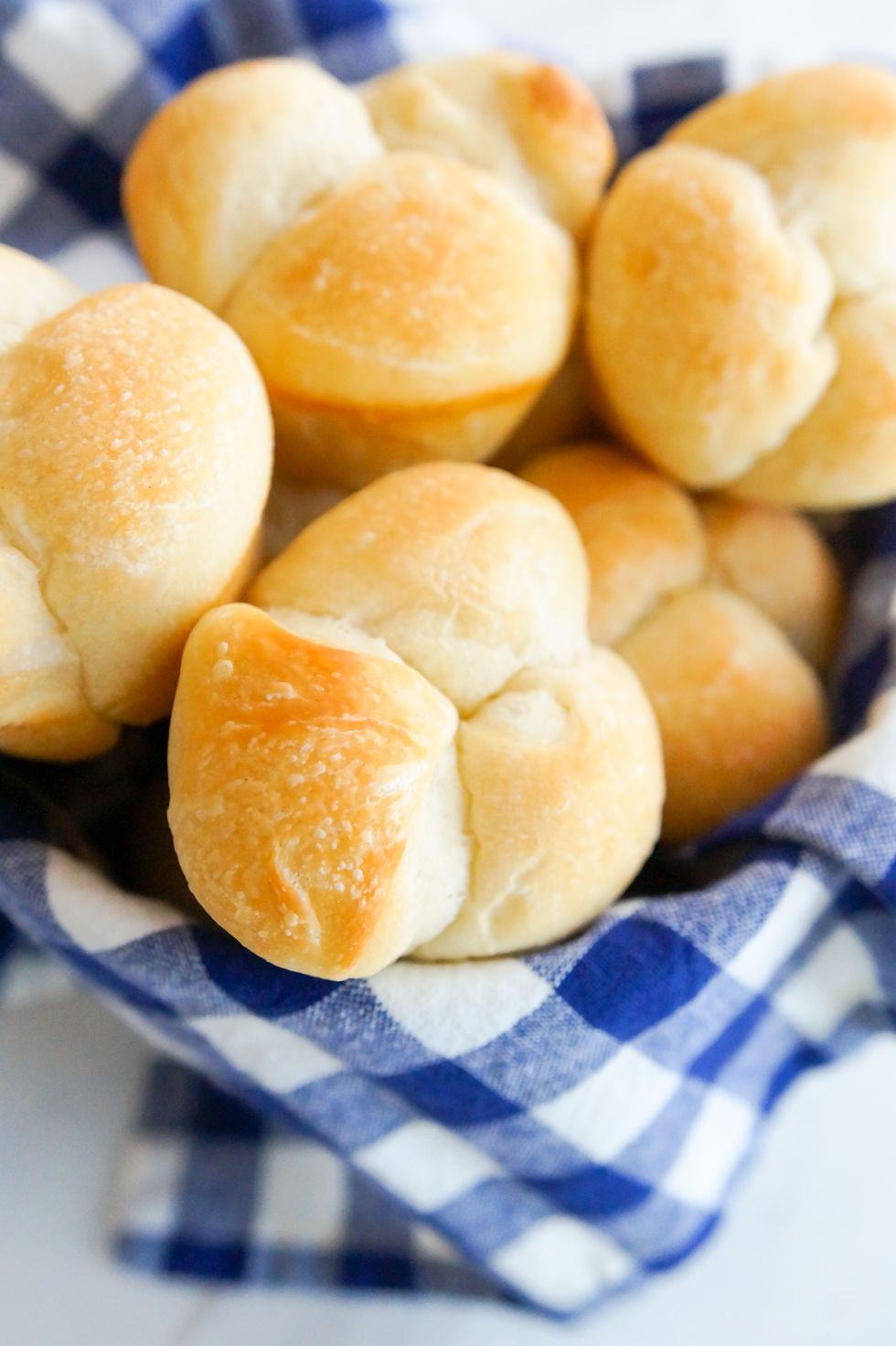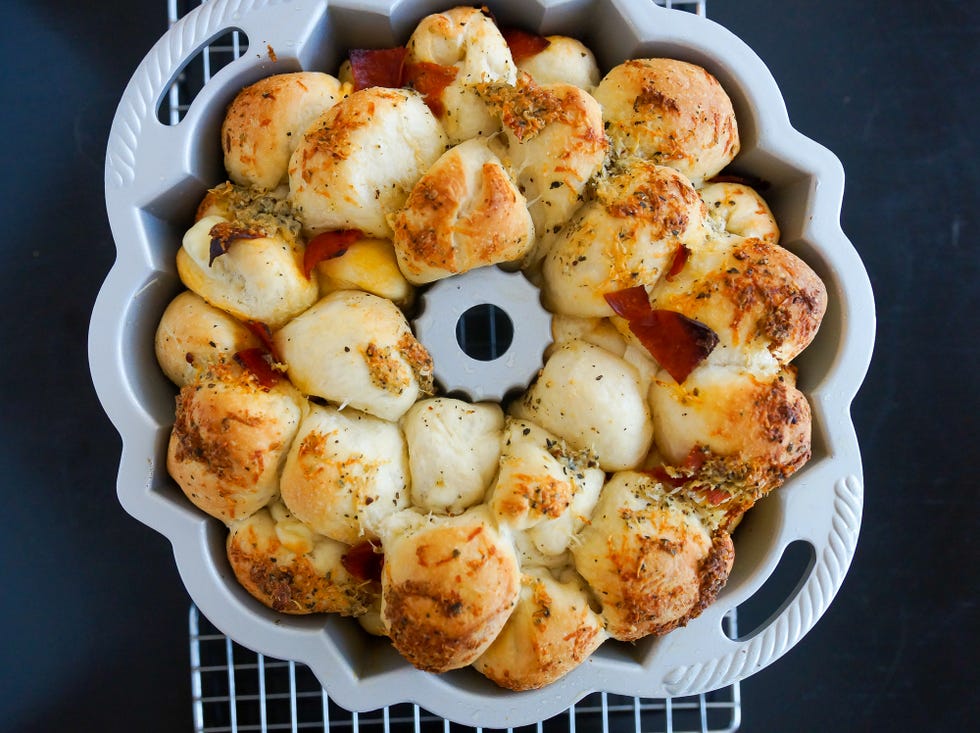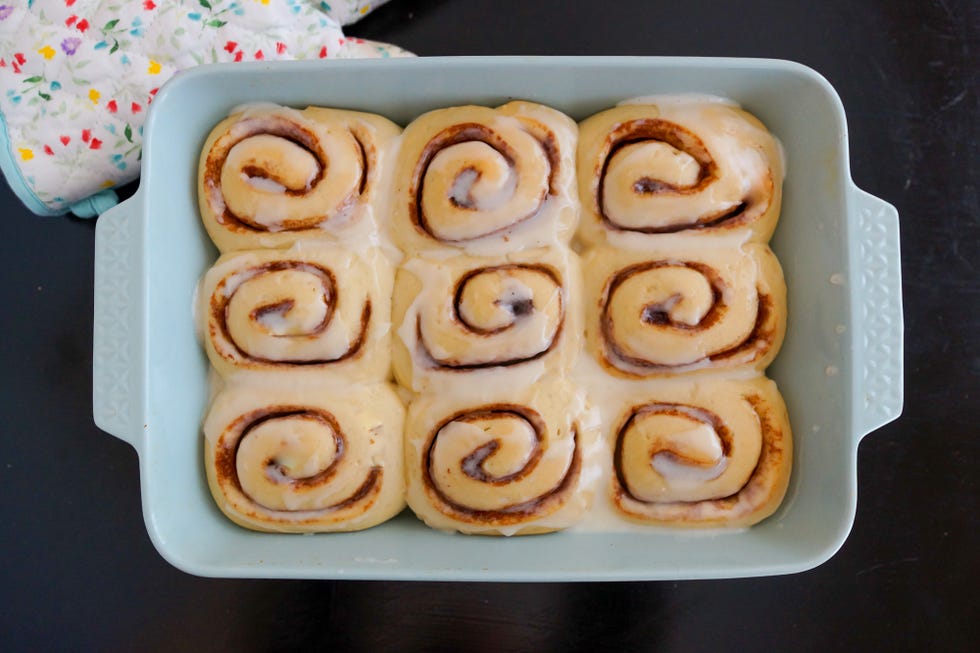Frozen bread dough is one of those convenience products that’s easily forgotten, but boy is it ever worth its weight in gold. Buy a 3-loaf package and just see where it takes you—way beyond a basic loaf of bread.
All of these recipes start with 1 or 2 loaves of thawed dough. Overnight thawing in the refrigerator is my preferred method, but the package lists instructions for a quicker thaw at room temperature. Keep in mind that the “quicker” version still involves hours of thawing. I like to place a frozen loaf in a greased loaf pan, cover it loosely with a greased piece of plastic wrap, and let it sit in the fridge overnight.
You can be sure that your bread is baked for any of these recipes when it reads 190-200ºF on an instant-read thermometer. I can’t remember meat readiness temps, but I took a bread class years ago, and that stuck with me. It’s always a good way to check if you’re in doubt.
Place frozen dough in pan, and cover with sprayed plastic wrap to keep it from sticking to dough while rising. RISE – Let rise 4 to 7 hours, until dough is 1 inch above the top of the pan. Actual time depends on temperature of your kitchen. Do not over proof.

1 – Cloverleaf Rolls
Let’s start with what is maybe the most obvious: rolls. Cloverleaf rolls seem so fancy, don’t they? I love busting these out at a regular weeknight dinner and seeing if I can stop at two. (I can’t.)

To make these, grease a 12-cup muffin tin. Cut the thawed dough into 12 even pieces. Cut each of those pieces into three. Roll into balls and place into the greased tin. Cover with a dish towel or greased plastic wrap and let rise for about 1 1/2 hours. Brush with melted butter and bake for about 15–20 minutes, or until done.

2 – Pizza Monkey Bread
You’ve all heard of sweet monkey bread which, of course, you can make with bread dough. But have you ever tried savory monkey bread? Our son is home from college and said this recipe is “the best thing I’ve eaten in months!” How’s that for an endorsement?

To make this, melt 1/2 cup salted butter with 1 tablespoon Italian seasoning and 1 teaspoon garlic salt. Let cool but don’t let it solidify. Stir in 1 cup freshly grated Parmesan. Grease a large bundt pan with shortening. Cut 8 ounces of block mozzarella into 64 pieces, and cut two thawed loaves into 24-30 pieces each.
Fold each ball of dough around a piece of cheese. Pinch and roll to seal, roll in the butter mixture, and place into the greased bundt pan. Scatter quartered pepperoni slices in as you go, if desired. Top with any of the remaining butter mixture. Cover with greased plastic wrap and let rise for 1 1/2 hours. Bake at 350ºF for about 40–45 minutes, tenting with foil after 30 minutes if needed to prevent over-browning.

Let the monkey bread rest for 5 minutes before inverting onto a serving platter and an additional 5 before serving. Tear off chunks and dip into warmed marinara sauce.

How long should you leave bread dough to rise for?
FAQ
How long do you let frozen bread dough rise?
Why is my frozen bread dough not rising?
How can I speed up thawing frozen bread dough?
Is there a way to make frozen dough rise faster?
How long does frozen dough need to rise?
The ideal rise time for frozen dough can vary depending on several factors, including the type of bread, the temperature of the environment, and the age of the dough. The type of bread you’re making can greatly impact how long the frozen dough needs to rise.
How long does it take bread to rise?
Yes! As it has twice the amount of yeast, it still rises perfectly. You need to let it rise as per normal bread, for around 20 minutes to an hour depending on your desired outcome. 1. Use a rolling pin to gently roll the dough out until it is flat. 2. Place the slices of mozzarella over the dough in a thin layer.
How do I determine the optimal rise time for frozen bread dough?
By taking these factors into consideration, you can determine the optimal rise time for your frozen bread dough. Bread dough rising is controlled by a complex series of chemical reactions, which are influenced by factors such as temperature, humidity, and the type of yeast used.
Can You bake frozen bread dough?
To prepare frozen bread dough for baking, simply remove it from the freezer and place it on a greased or parchment-lined baking sheet. Allow it to thaw and rise at room temperature for the recommended time specified on the packaging or in the recipe. What temperature and baking time should I use for frozen bread dough?
